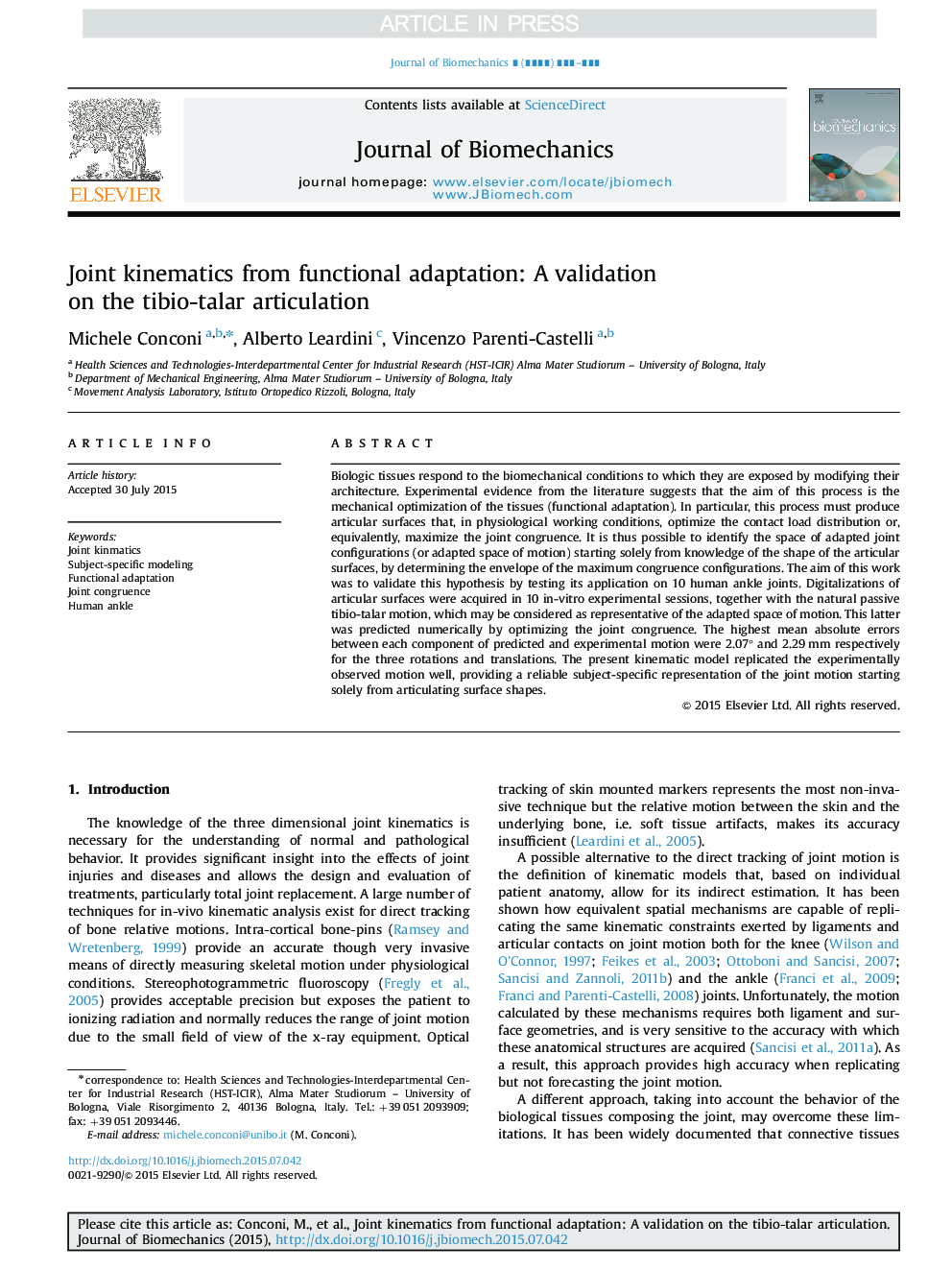| Article ID | Journal | Published Year | Pages | File Type |
|---|---|---|---|---|
| 10431264 | Journal of Biomechanics | 2015 | 8 Pages |
Abstract
Biologic tissues respond to the biomechanical conditions to which they are exposed by modifying their architecture. Experimental evidence from the literature suggests that the aim of this process is the mechanical optimization of the tissues (functional adaptation). In particular, this process must produce articular surfaces that, in physiological working conditions, optimize the contact load distribution or, equivalently, maximize the joint congruence. It is thus possible to identify the space of adapted joint configurations (or adapted space of motion) starting solely from knowledge of the shape of the articular surfaces, by determining the envelope of the maximum congruence configurations. The aim of this work was to validate this hypothesis by testing its application on 10 human ankle joints. Digitalizations of articular surfaces were acquired in 10 in-vitro experimental sessions, together with the natural passive tibio-talar motion, which may be considered as representative of the adapted space of motion. This latter was predicted numerically by optimizing the joint congruence. The highest mean absolute errors between each component of predicted and experimental motion were 2.07° and 2.29 mm respectively for the three rotations and translations. The present kinematic model replicated the experimentally observed motion well, providing a reliable subject-specific representation of the joint motion starting solely from articulating surface shapes.
Related Topics
Physical Sciences and Engineering
Engineering
Biomedical Engineering
Authors
Michele Conconi, Alberto Leardini, Vincenzo Parenti-Castelli,
